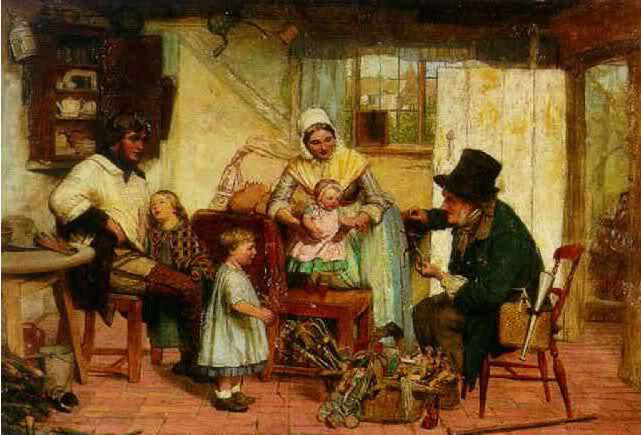Merchant
Cliquez ici pour la version française
Le Marchand | The Merchant
"Fur traders in Canada, trading with Indians", 1777 engraving by William Faden, Library and Archives Canada.
A marchand, or merchant, was a trader who sold a specific type of merchandise or product. A marchand grossier is a wholesale merchant — a wholesaler versus a retailer or retail merchant. Merchants handled most of the supply and distribution of products that came from Europe.
Historians have outlined a specific hierarchy within the merchants and traders of New France. At the very top were the richest people and most influential in the country— Québec and Montréal traders specializing in import and export. Most of them could also choose to become rank officers in the city's militia, or to claim a seat on the Québec Superior Council. They were given other official honours that brought them closer to nobility status.
Next in importance were the retailers of Québec and Montréal. They received the merchants' products and distributed them in the St. Lawrence Valley. Each large city had an area designated for merchants and their trade, typically called the stock market or the exchange. At the same level of hierarchy as these merchant retailers were the marchands-voyageurs (voyageur merchants), who dominated the fur trade in Montreal. In the 17th century, the most enterprising of the lower classes could find a way to climb the hierarchy via the fur trade. Next in importance were lenders, small merchants and merchant-craftsmen. They supplied goods to the countryside of the St. Lawrence Valley. Their revenues increased as land clearing progressed and the population of the seigneuries increased.
"The Toy Seller", circa 1869 painting by David Henry Friston, Wikimedia Commons
Finally, at the bottom of the scale, were the merchants who were alone in their business, without resorting to the help of servants or engagés. Overall, despite the considerable differences in wealth that characterized this group, the fur trade mobilized most of their activities. The main source of income in the colony, the fur trade made the fortune of many merchants.
A derivative of this occupation, the surname Marchand is still common in Canada today. The surname can also refer to Le Marchand, the name of several localities in southern France.
Source: Government of Canada, “Middle-Class Merchants and Traders”, Virtual Museum of New France, Canadian Museum of History, https://www.historymuseum.ca/virtual-museum-of-new-france/population/social-groups/, based on original research by Arnaud Bessière, Ph.D.

